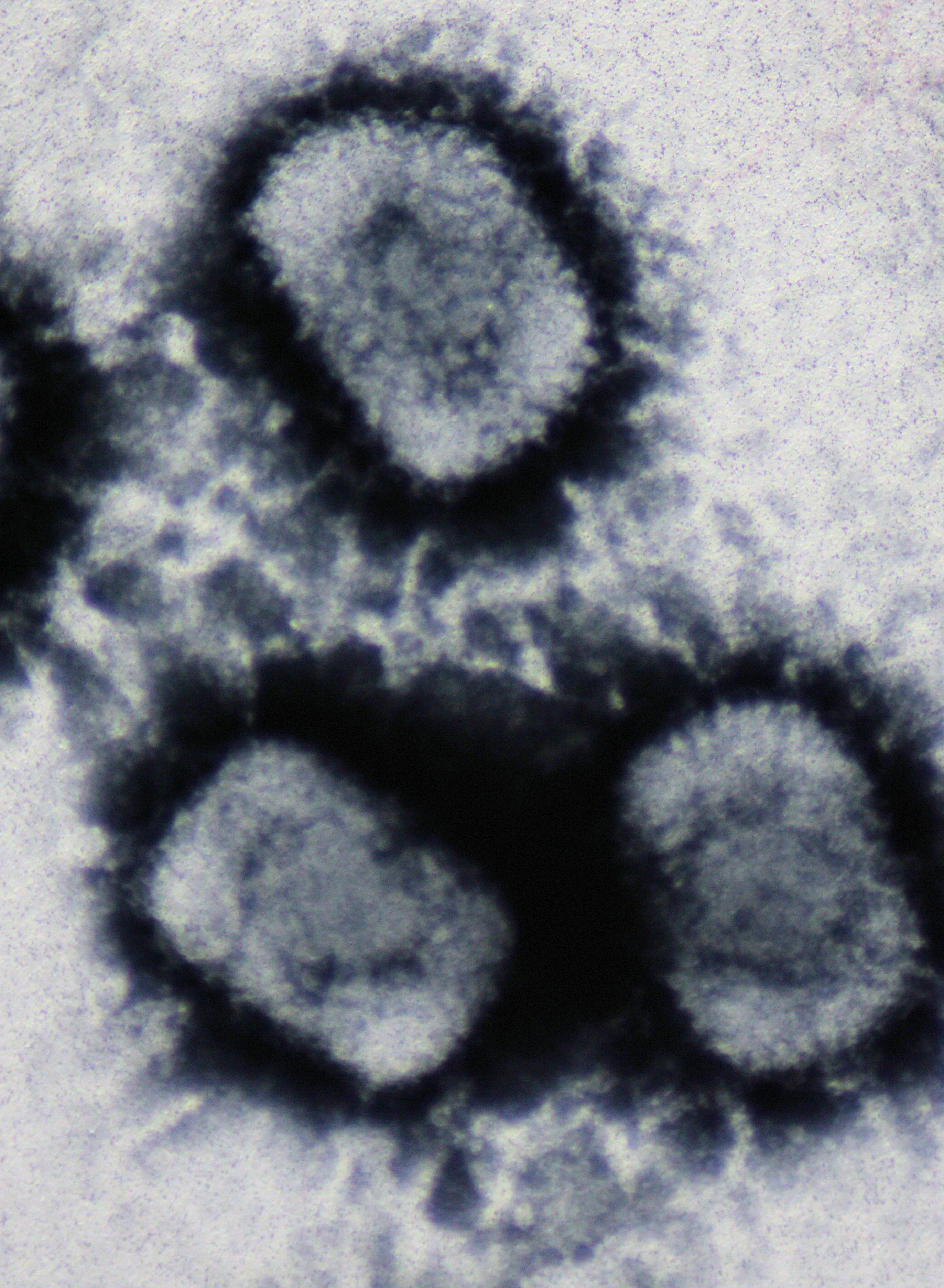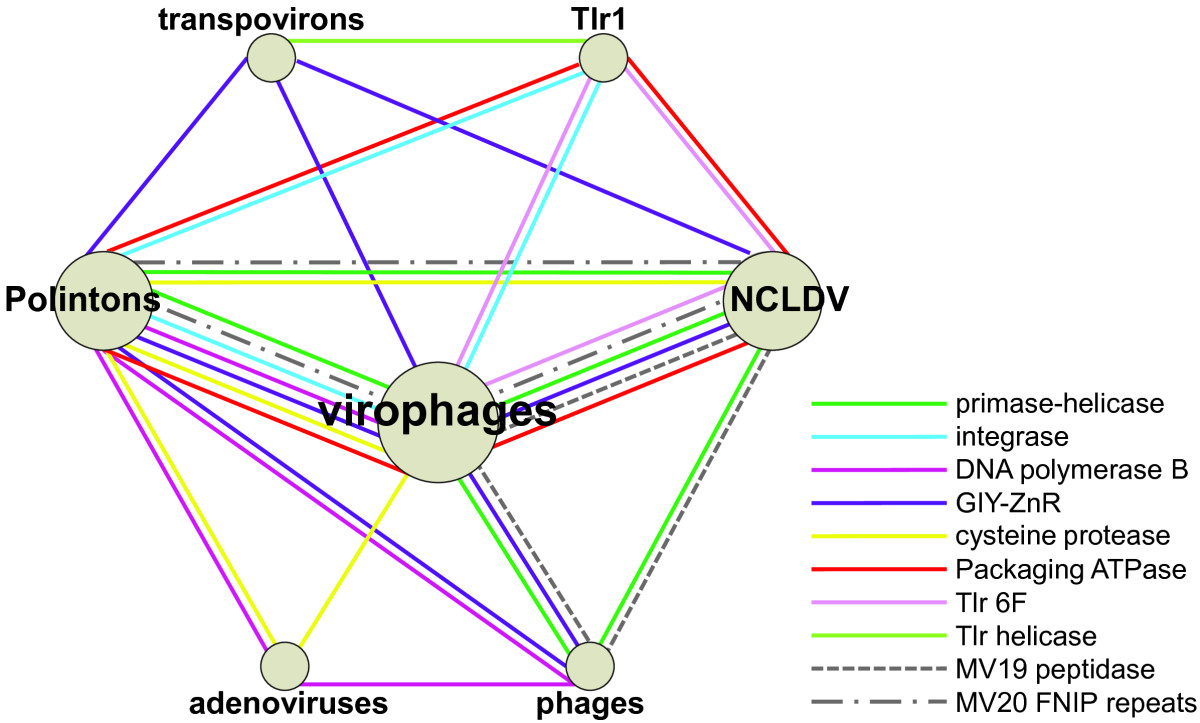|
Portogloboviridae
''Portogloboviridae'' is a family of DNA viruses that infect archaea. It is a proposed family of the realm ''Varidnaviria''. Viruses in the family are related to '' Halopanivirales''.The references cited in this article refer to ''Sphaerolipoviridae''. In 2020, this family was split into three families within the order ''Halopanivirales'', so "''Halopanivirales''" is used throughout this article where sources state "''Sphaerolipoviridae''". The capsid proteins of these viruses and their characteristics are of evolutionary importance for the origin of the other ''Varidnaviria'' viruses since they seem to retain primordial characters. Description The virions in this family have a capsid with icosahedral geometry and a viral envelope that protects the genetic material. The diameter is 83 to 87 nanometers. The genome is circular and of double-stranded DNA with a length of 20,222 base pairs. The genome contains 45 open reading frames (ORFs), which are closely arranged and occupy 89.1% ... [...More Info...] [...Related Items...] OR: [Wikipedia] [Google] [Baidu] |
Varidnaviria
''Varidnaviria'' is a realm of viruses that includes all DNA viruses that encode major capsid proteins that contain a vertical jelly roll fold. The major capsid proteins (MCP) form into pseudohexameric subunits of the viral capsid, which stores the viral deoxyribonucleic acid (DNA), and are perpendicular, or vertical, to the surface of the capsid. Apart from this, viruses in the realm also share many other characteristics, such as minor capsid proteins (mCP) with the vertical jelly roll fold, an ATPase that packages viral DNA into the capsid, and a DNA polymerase that replicates the viral genome. ''Varidnaviria'' was established in 2019 based on the shared characteristics of the viruses in the realm. There are two groups of viruses in ''Varidnaviria'': viruses that have a double vertical jelly roll (DJR) folds in the MCP, assigned to the kingdom ''Bamfordvirae'', and viruses that have a single vertical jelly roll (SJR) fold in the MCP, assigned to the kingdom ''Helvetiavirae''. T ... [...More Info...] [...Related Items...] OR: [Wikipedia] [Google] [Baidu] |
Realm (virology)
In virology, realm is the highest taxonomic rank established for viruses by the International Committee on Taxonomy of Viruses (ICTV), which oversees virus taxonomy. Six virus realms are recognized and united by specific highly conserved traits: * ''Adnaviria'', which contains archaeal filamentous viruses with A-form double-stranded (ds) DNA genomes encoding a unique alpha-helical major capsid protein; * ''Duplodnaviria'', which contains all dsDNA viruses that encode the HK97-fold major capsid protein; * ''Monodnaviria'', which contains all single-stranded DNA (ssDNA) viruses that encode a HUH superfamily endonuclease and their descendants; * '' Riboviria'', which contains all RNA viruses that encode RNA-dependent RNA polymerase and all viruses that encode reverse transcriptase; * ''Ribozyviria'', which contains hepatitis delta-like viruses with circular, negative-sense ssRNA genomes; * and ''Varidnaviria'', which contains all dsDNA viruses that encode a vertical jelly rol ... [...More Info...] [...Related Items...] OR: [Wikipedia] [Google] [Baidu] |
DNA Viruses
A DNA virus is a virus that has a genome made of deoxyribonucleic acid (DNA) that is replicated by a DNA polymerase. They can be divided between those that have two strands of DNA in their genome, called double-stranded DNA (dsDNA) viruses, and those that have one strand of DNA in their genome, called single-stranded DNA (ssDNA) viruses. dsDNA viruses primarily belong to two realms: ''Duplodnaviria'' and ''Varidnaviria'', and ssDNA viruses are almost exclusively assigned to the realm ''Monodnaviria'', which also includes some dsDNA viruses. Additionally, many DNA viruses are unassigned to higher taxa. Reverse transcribing viruses, which have a DNA genome that is replicated through an RNA intermediate by a reverse transcriptase, are classified into the kingdom ''Pararnavirae'' in the realm ''Riboviria''. DNA viruses are ubiquitous worldwide, especially in marine environments where they form an important part of marine ecosystems, and infect both prokaryotes and eukaryotes. They ap ... [...More Info...] [...Related Items...] OR: [Wikipedia] [Google] [Baidu] |
Family (biology)
Family ( la, familia, plural ') is one of the eight major hierarchical taxonomic ranks in Linnaean taxonomy. It is classified between order and genus. A family may be divided into subfamilies, which are intermediate ranks between the ranks of family and genus. The official family names are Latin in origin; however, popular names are often used: for example, walnut trees and hickory trees belong to the family Juglandaceae, but that family is commonly referred to as the "walnut family". What belongs to a family—or if a described family should be recognized at all—are proposed and determined by practicing taxonomists. There are no hard rules for describing or recognizing a family, but in plants, they can be characterized on the basis of both vegetative and reproductive features of plant species. Taxonomists often take different positions about descriptions, and there may be no broad consensus across the scientific community for some time. The publishing of new data and opini ... [...More Info...] [...Related Items...] OR: [Wikipedia] [Google] [Baidu] |
Codon
The genetic code is the set of rules used by living cells to translate information encoded within genetic material ( DNA or RNA sequences of nucleotide triplets, or codons) into proteins. Translation is accomplished by the ribosome, which links proteinogenic amino acids in an order specified by messenger RNA (mRNA), using transfer RNA (tRNA) molecules to carry amino acids and to read the mRNA three nucleotides at a time. The genetic code is highly similar among all organisms and can be expressed in a simple table with 64 entries. The codons specify which amino acid will be added next during protein biosynthesis. With some exceptions, a three-nucleotide codon in a nucleic acid sequence specifies a single amino acid. The vast majority of genes are encoded with a single scheme (see the RNA codon table). That scheme is often referred to as the canonical or standard genetic code, or simply ''the'' genetic code, though variant codes (such as in mitochondria) exist. History Efforts ... [...More Info...] [...Related Items...] OR: [Wikipedia] [Google] [Baidu] |
Bamfordvirae
''Bamfordvirae'' is a kingdom of viruses. This kingdom is recognized for its use of double jelly roll major capsid proteins. It was formerly known as the PRD1-adenovirus lineage. The kingdom is named after Dennis H. Bamford who first promoted the evolutionary unity of all viruses encoding double jelly-roll major capsid proteins. Taxonomy The following phyla are recognized: *''Nucleocytoviricota'' *''Preplasmiviricota ''Preplasmiviricota'' is a phylum of viruses. Taxonomy The phylum contains the following classes: * ''Maveriviricetes Virophages are small, double-stranded DNA viral phages that require the co-infection of another virus. The co-infecting v ...'' References {{Virus-stub ... [...More Info...] [...Related Items...] OR: [Wikipedia] [Google] [Baidu] |
Last Universal Common Ancestor
The last universal common ancestor (LUCA) is the most recent population from which all organisms now living on Earth share common descent—the most recent common ancestor of all current life on Earth. This includes all cellular organisms; the origins of viruses are unclear but they share the same genetic code. LUCA probably harboured a variety of viruses. The LUCA is not the first life on Earth, but rather the latest form ancestral to all existing life. While there is no specific fossil evidence of the LUCA, the detailed biochemical similarity of all current life confirms its existence. Its characteristics can be inferred from shared features of modern genomes. These genes describe a complex life form with many co-adapted features, including transcription and translation mechanisms to convert information from DNA to RNA to proteins. The LUCA probably lived in the high-temperature water of deep sea vents near ocean-floor magma flows around 4 billion years ago. Histori ... [...More Info...] [...Related Items...] OR: [Wikipedia] [Google] [Baidu] |
Lytic Cycle
The lytic cycle ( ) is one of the two cycles of viral reproduction (referring to bacterial viruses or bacteriophages), the other being the lysogenic cycle. The lytic cycle results in the destruction of the infected cell and its membrane. Bacteriophages that only use the lytic cycle are called virulent phages (in contrast to temperate phages). In the lytic cycle, the viral DNA exists as a separate free floating molecule within the bacterial cell, and replicates separately from the host bacterial DNA, whereas in the lysogenic cycle, the viral DNA is located within the host DNA. This is the key difference between the lytic and lysogenic (bacterio)phage cycles. However, in both cases the virus/phage replicates using the host DNA machinery. Description The lytic cycle, which is also commonly referred to as the "reproductive cycle" of the bacteriophage, is a six-stage cycle. The six stages are: attachment, penetration, transcription, biosynthesis, maturation, and lysis. # Attachment ... [...More Info...] [...Related Items...] OR: [Wikipedia] [Google] [Baidu] |
Viral Replication
Viral replication is the formation of biological viruses during the infection process in the target host cells. Viruses must first get into the cell before viral replication can occur. Through the generation of abundant copies of its genome and packaging these copies, the virus continues infecting new hosts. Replication between viruses is greatly varied and depends on the type of genes involved in them. Most DNA viruses assemble in the nucleus while most RNA viruses develop solely in cytoplasm. Viral production / replication Viruses multiply only in living cells. The host cell must provide the energy and synthetic machinery and the low- molecular-weight precursors for the synthesis of viral proteins and nucleic acids. The virus replication occurs in seven stages, namely; # Attachment # Entry, # Uncoating, # Transcription / mRNA production, # Synthesis of virus components, # Virion assembly and # Release (Liberation Stage). Attachment It is the first step of viral replication ... [...More Info...] [...Related Items...] OR: [Wikipedia] [Google] [Baidu] |
Proteins
Proteins are large biomolecules and macromolecules that comprise one or more long chains of amino acid residues. Proteins perform a vast array of functions within organisms, including catalysing metabolic reactions, DNA replication, responding to stimuli, providing structure to cells and organisms, and transporting molecules from one location to another. Proteins differ from one another primarily in their sequence of amino acids, which is dictated by the nucleotide sequence of their genes, and which usually results in protein folding into a specific 3D structure that determines its activity. A linear chain of amino acid residues is called a polypeptide. A protein contains at least one long polypeptide. Short polypeptides, containing less than 20–30 residues, are rarely considered to be proteins and are commonly called peptides. The individual amino acid residues are bonded together by peptide bonds and adjacent amino acid residues. The sequence of amino acid residues ... [...More Info...] [...Related Items...] OR: [Wikipedia] [Google] [Baidu] |
Genome
In the fields of molecular biology and genetics, a genome is all the genetic information of an organism. It consists of nucleotide sequences of DNA (or RNA in RNA viruses). The nuclear genome includes protein-coding genes and non-coding genes, other functional regions of the genome such as regulatory sequences (see non-coding DNA), and often a substantial fraction of 'junk' DNA with no evident function. Almost all eukaryotes have mitochondria and a small mitochondrial genome. Algae and plants also contain chloroplasts with a chloroplast genome. The study of the genome is called genomics. The genomes of many organisms have been sequenced and various regions have been annotated. The International Human Genome Project reported the sequence of the genome for ''Homo sapiens'' in 200The Human Genome Project although the initial "finished" sequence was missing 8% of the genome consisting mostly of repetitive sequences. With advancements in technology that could handle sequenci ... [...More Info...] [...Related Items...] OR: [Wikipedia] [Google] [Baidu] |






